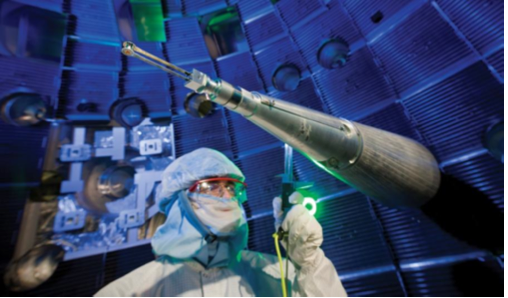
The Weekly Fusion: A Look at Current Advancements in Fusion Energy
│6.26.15-7.2.15│
The future of fusion is constantly being unfolded in front of our eyes, as every week there is some breakthrough in new technologies and designs in the nuclear fusion sector of energy. Since there is such a wealth of information, I have gathered and consolidated a list of articles geared toward the advancement of making fusion energy a reality, from within the past week.
Weekly Breakthroughs
Going Nuclear: The Fusion Race is Heating Up. Will Anyone Cross the Finish Line?
James Temple / Re/code / 7.1.15
Several private companies such as Lockheed Martin, Helion Energy, and General Fusion are investing in fusion energy. The private sector, along with the public sector are critical for the success of fusion, especially ITER, the tokamak fusion reactor currently under construction in southern France. This article gives a good overview of fusion investment, both in public and private sectors.
Scientists propose new model of mysterious barrier to fusion known as the ‘density limit’
DOE / Princeton Plasma Physics Laboratory / 6.30.15
Researchers from the Princeton Plasma Physics Laboratory have teamed up and have developed a model that can circumvent the problem known as the “density limit.” This density limit is reached when the hot plasma reaches a certain “density and spirals apart in a flash of light. Understanding the density limit is critical for the advancement of fusion energy to occur.
Solutions to circumventing the ‘density limit’ have been found by closely studying the “runaway growth of bubble-like islands that form within the magnetically confined plasma.” The studies performed by these researchers have hypothesized that the data generated from the asymmetric effect that occurs because of the ‘density limit’, when applied to the Rutherford/White and Rebut equation a revised and complete model that explains the source of the ‘density limits’ is uncovered.
Arunabh Satpathy / The University of Washington / 6.30.15
Researchers at the University of Washington have made a major push in fusion energy, with a grant from the Department of Energy’s ARPA-E program of $5.3 million dollars, so that they are able to scale up their ‘Sheared Flow Stabilized Z-Pinch’ fusion device.
The Z-Pinch technique is using magnetic field coil driven fusion reactors. The Z-Pinch could be less expensive, allowing it to be used in power plants, space propulsion, and possibly other future applications.
The ultimate goal of the students and the researchers involved in this project, is to take part in advancing the energy community, by developing a cheap fusion reactor that is powerful and efficient.
Sandia’s Z machine receives funding aimed at fusion energy
Sandia National Laboratories / 6.29.15
The Sandia National Laboratory and the University of Rochester Laboratory for Laser Energetics (LLE) have received a $3.8 million dollar award from the Department of Energy’s Advanced Research Projects Agency Energy (ARPA-E). This award was issued so that breakthroughs can occurs that are built upon recent and earlier “successes of Sandia’s Magnetized Liner Inertial Fusion (MagLIF) concept”.
The collaboration between Sandia National Labs and LLE, will allow for a fusion study that looks into unexplored intermediate density that is in between the lower-than-air density studies at the ITER project being built in Southern France, and the greater-than-solid density that is being studied at the National Ignition Facility at Lawrence Livermore National Laboratory.
This research using the Z accelerator machine and the lasers (OMEGA and OMEGA-EP) when fully exploited should allow for fusion reactors to “occur at 1 to 2 percent of the density and pressure required in traditional inertial confinement fusion”. It is by the collaboration between LLE and Sandia, which will make possible the exploration of fusion parameters that have been previously unexplored.





